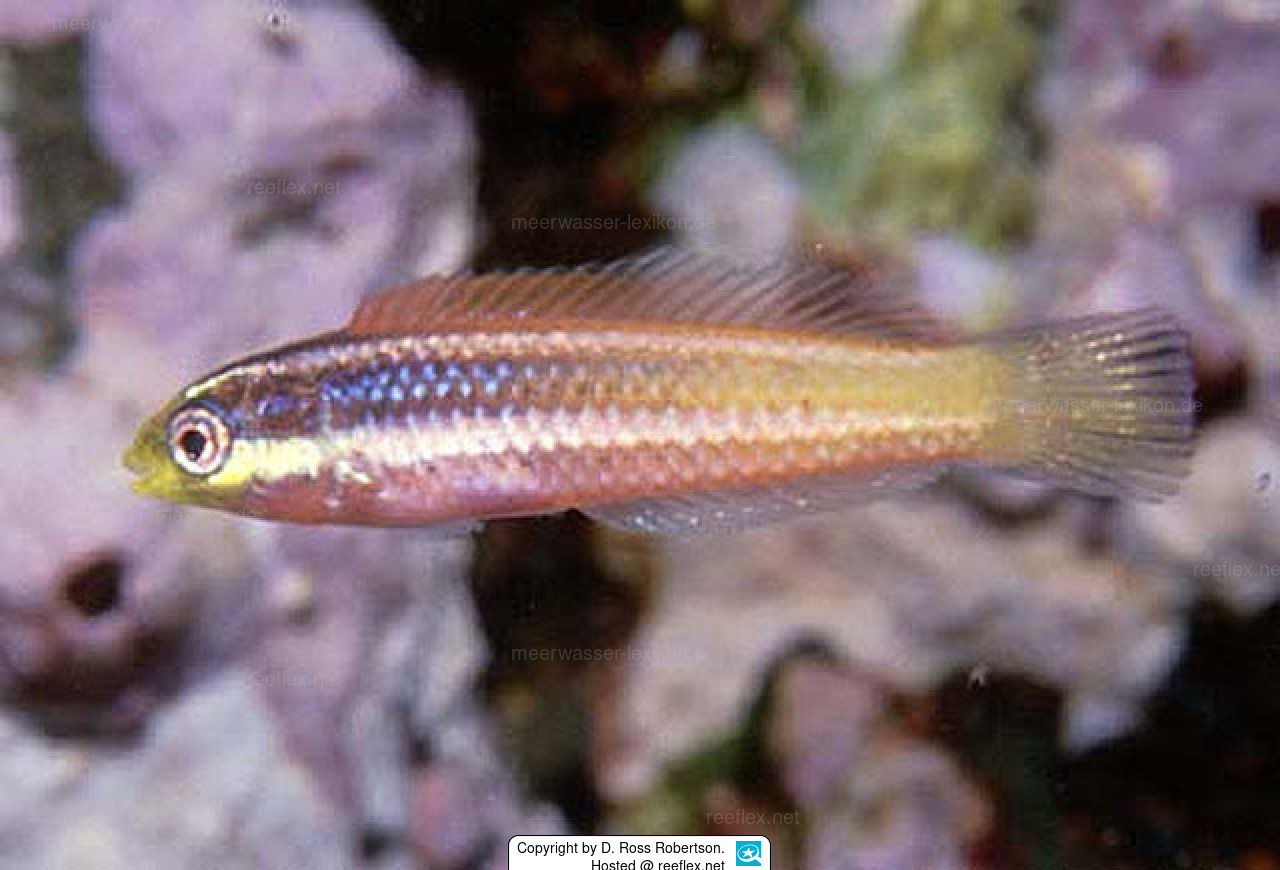Info
Allen & Robertson, 1992
Very special thanks for the first three photos of Halichoeres insularis to Dr. Ross Robertson, Australia.
He has taken the photos at
Revillagigedo and at Socorro Island in the Eastern Central Pacific where the wrasse lives in a depth of 7 to 10 meters.
These fishs requires sandy bottoms.
Fairly abundant over rock and coarse sand substrates. The wrasse forms schools of various sizes that move approximately 1 m above the bottom. They are too small to be marketed commercially.
Best left in the wild!
Classification: Biota > Animalia (Kingdom) > Chordata (Phylum) > Vertebrata (Subphylum) > Gnathostomata (Superclass) > Pisces (Superclass) > Actinopterygii (Class) > Perciformes (Order) > Labridae (Family) > Halichoeres (Genus) > Halichoeres insularis (Species)
Jumping guard
A jumping guard prevents (nocturnal) fish from jumping out.
Wrasses, blennies, hawkfishs and gobies jump out of an unprotected tank in fright if their night rest is disturbed, unfortunately these jumpers are found dried up in the morning on carpets, glass edges or later behind the tank.
https://www.korallenriff.de/en/article/1925_5_Jump_Protection_Solutions_for_Fish_in_the_Aquarium__5_Net_Covers.html
A small night light also helps, as it provides the fish with a means of orientation in the dark!
Very special thanks for the first three photos of Halichoeres insularis to Dr. Ross Robertson, Australia.
He has taken the photos at
Revillagigedo and at Socorro Island in the Eastern Central Pacific where the wrasse lives in a depth of 7 to 10 meters.
These fishs requires sandy bottoms.
Fairly abundant over rock and coarse sand substrates. The wrasse forms schools of various sizes that move approximately 1 m above the bottom. They are too small to be marketed commercially.
Best left in the wild!
Classification: Biota > Animalia (Kingdom) > Chordata (Phylum) > Vertebrata (Subphylum) > Gnathostomata (Superclass) > Pisces (Superclass) > Actinopterygii (Class) > Perciformes (Order) > Labridae (Family) > Halichoeres (Genus) > Halichoeres insularis (Species)
Jumping guard
A jumping guard prevents (nocturnal) fish from jumping out.
Wrasses, blennies, hawkfishs and gobies jump out of an unprotected tank in fright if their night rest is disturbed, unfortunately these jumpers are found dried up in the morning on carpets, glass edges or later behind the tank.
https://www.korallenriff.de/en/article/1925_5_Jump_Protection_Solutions_for_Fish_in_the_Aquarium__5_Net_Covers.html
A small night light also helps, as it provides the fish with a means of orientation in the dark!







 Dr. D. Ross Robertson, Panama
Dr. D. Ross Robertson, Panama




















































































